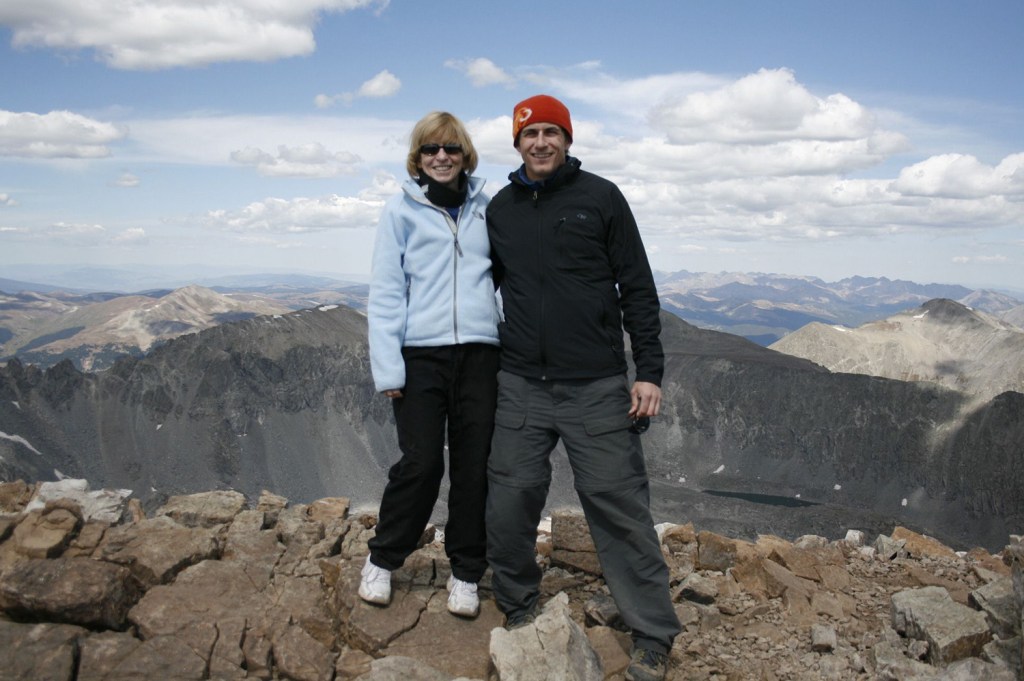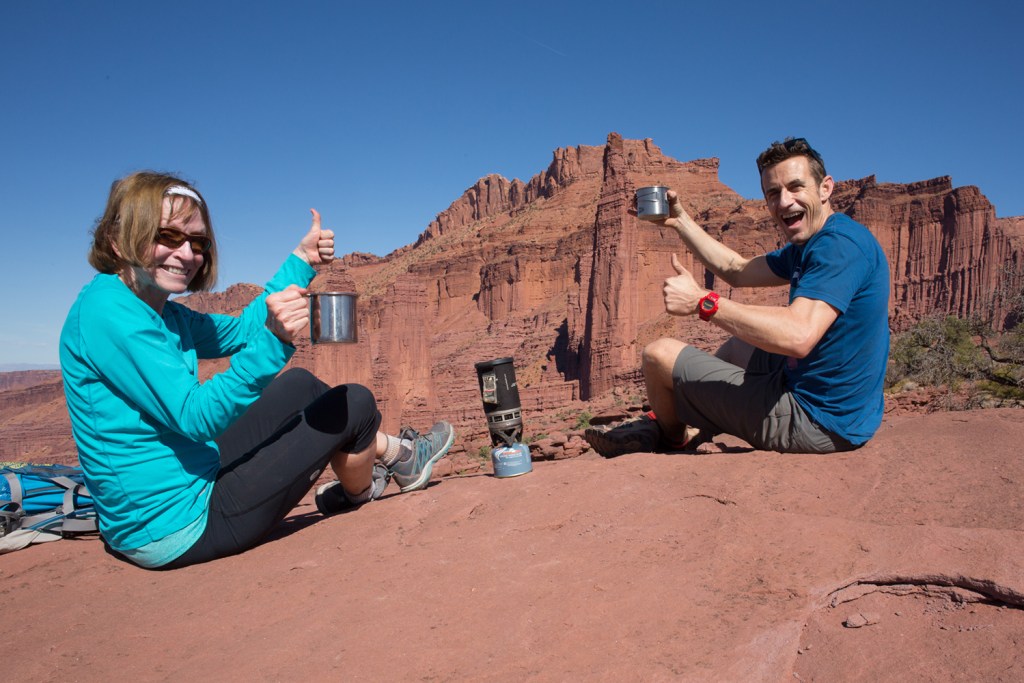About a thousand feet from the top of Quandary Peak, a fourteener in Colorado, I pulled my gloved hand off my ski pole and swing my hand around, trying to force warm blood into my numb fingers and thumb. It had been nine degrees Fahrenheit when we started skinning up at the trailhead, and we assumed the sun would rapidly warm the air temperature. But a cold breeze blowing from the northwest chilled everything, and both Hilary and I had numb hands with another hour of climbing up to the summit.

Here’s good advice my mom told me: Swing your arms around to warm your hands up when they’re cold.
Here’s another thing my mom taught me: You don’t have to be having fun to be having fun.
I grew up in the mountainless state of Iowa, with a mother who made the best of the available terrain. In the summer, we rode bikes everywhere, and she ran three or four times a week.
In the winter, we went ice skating—outside. We didn’t live anywhere close to an indoor ice rink with immaculately Zambonied planes of ice to skate on. My childhood memory of ice skating is a few dozen days merged into one aggregate scene: I’m ten years old on a cold, cloudy, humid day on Viking Lake in southwest Iowa, pushing my black figure skates around the semi-flat ice, probably layered up like Randy Parker from “A Christmas Story,” wishing I was indoors playing with my G.I. Joe action figures instead of wishing my fingertips didn’t ache so much from the cold.
And there’s my mom, insisting this is fun, as if we’re splashing around the town swimming pool on a hot summer day. And telling me to swing my hands around to warm up my fingertips.

As an adult, I have the benefit of perspective, and the benefit of another 30 or so years of engineering progress in the design of my insulated Gore-Tex gloves. But I still get cold hands. Hilary and I stood taking a short break at about 13,200 feet on Quandary, wondering how it could be this cold in the middle of April in the sun, each of us trying to figure out if our hands would start to warm up soon or if we should bail.
I employed an old trick that climbing partners and my mother have used for years–“Let’s just go for a few more minutes and see how we feel.” So, we did, and magically, a few minutes later, the wind let up, we warmed up, and we popped onto the summit of the mountain, looking west at the waves of snowy peaks rolling toward the horizon.
It wasn’t fun, but it was worth it, and therefore fun, in that messed-up definition outdoorsfolk often have for the things we do. Sometimes, in a conversation with a climber, I’ll ask, “Do you climb ice?” And if they say no, I joke, “Oh, because you prefer fun things?” I mean, I think ice climbing is “fun,” but in a very specific, slightly masochistic way.
Most people would agree that eating hors d’oeuvres in a comfy chair while watching the Super Bowl is pretty fun, or at least a type of fun lots of people could relate to. Ice climbing is a very different kind of fun, that not nearly as many people understand. But I probably “enjoy” it because of all those days ice skating when I was young and my mom insisted it was fun. She’s not a mountain person, but I guess she always got it—that if you get tough enough and stop complaining, your potential to view experiences as enjoyable increases.

My mom hasn’t been ice climbing (yet), but I’m sure she’d be into it. What’s not to like? Cold hands, cold everything, ice chunks hitting you in the legs as you swing ice tools, and when you’re done, the joyful, intense pain of the screaming barfies. If we bring a thermos of hot chocolate, I’m sure she’d feel just like she did back on the ice of Viking Lake in the late 1980s. Maybe next winter.
